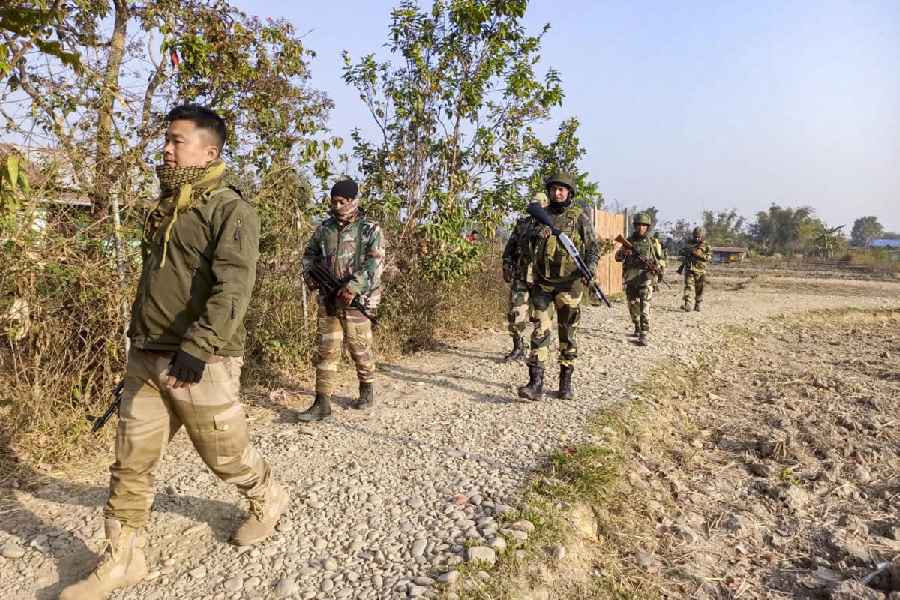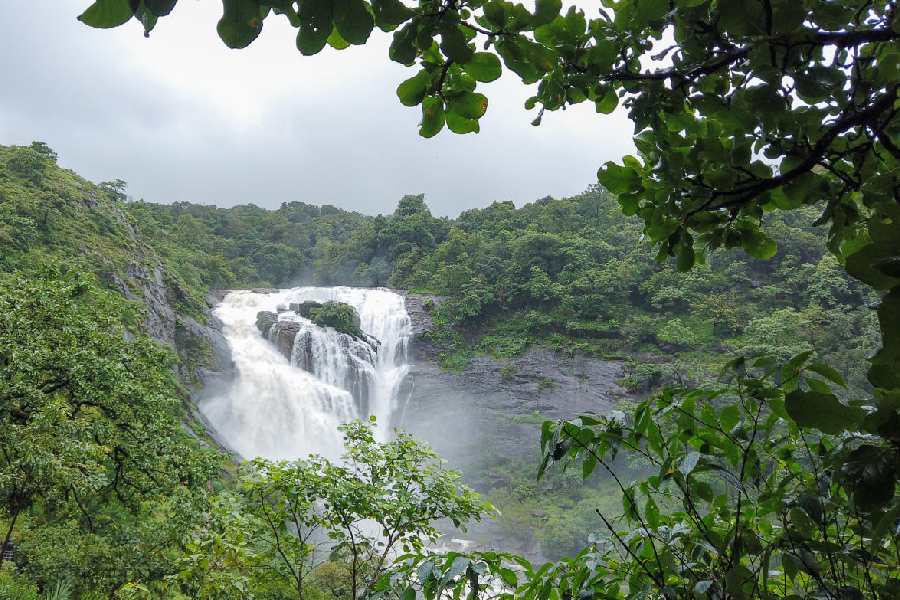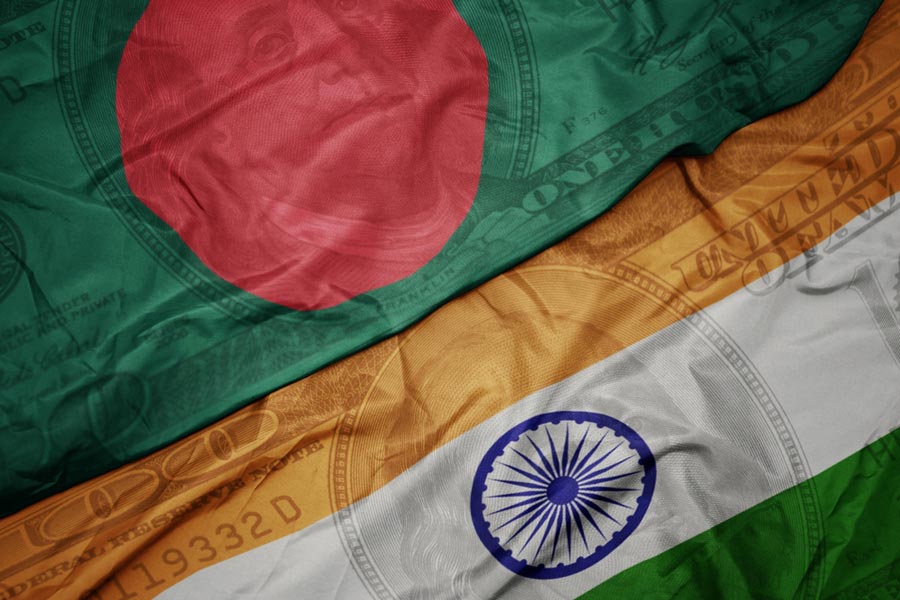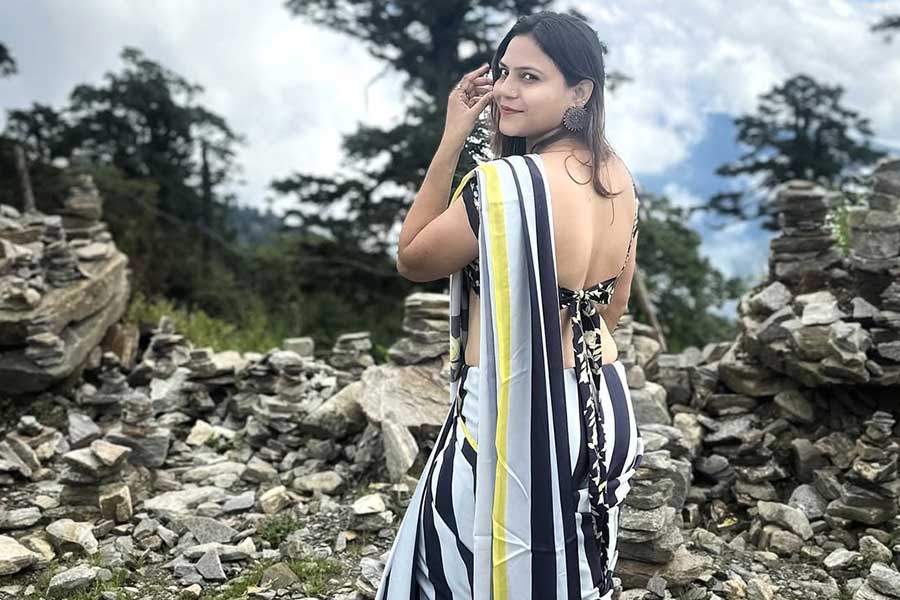| Health is harmony. Harmony in physical mental and spiritual dimensions of a human being. Health is a positive state, which not merely means absence of disease. Yogic practices start with the asanas, which act as a tool to harmonise the physical body with the mental. The far-reaching effects of yogic practices make yoga a science that renders positive and total health to a human being. | |
| The practices for this month are given below: | |
| 1. Gatyatmak Meru Vakrasana (dynamic spinal twist) | |
Sit on the floor with both legs outstretched. Separate the legs as far apart as possible. Keep the knees straight. Stretch the arms sideways at shoulder level. Keeping the arms straight, twist to the left and bring the right hand down to the left big toe. Stretch the straight left arm behind the back as the trunk turns to the left. Keep both arms in a straight line. Turn the head to the left and gaze at the left outstretched hand. Twist in the opposite direction and bring the left hand down towards the right big toe. Stretch the straight right arm behind the back. Turn the head to the right and gaze at the right outstretched hand. This is one round. Practise 10 to 20 rounds. | |
| Breathing: To apply pressure in the abdomen, breathe in when twisting and breathe out when returning to the centre. To give maximum flexion to the spine, breathe out when twisting and breathe in when returning to the centre. | |
| Contraindication: People with back conditions should avoid this asana. | |
| Benefits: This asana loosens up the vertebrae and removes stiffness of the back. | |
| 2. Janu Sirshasana (head to knee pose) | |
Sit with the legs outstretched and feet together. Bend the left leg, placing the heel of the foot against the perineum and the sole of the foot against the inside of the right thigh. Keep the left knee to the floor. Place the hands on top of the right knee, keeping the spine straight and the back muscles relaxed. This the starting position. Slowly bend forward, sliding the hands down the right leg, and grasp the right foot. If possible hold the big toe with the index finger, middle finger and thumb of the left hand and the outside edge of the foot with the right hand. Try to touch the forehead to the knee. This is the final position. Hold the position as long as possible. Return to the starting position and rest the hands on the knees. Change sides and repeat with right leg bent and left leg straight. Practise five times with each leg. | |
| Breathing: Inhale in the starting position. Exhale while bending forward. Retain the breath outside if holding the pose for a short duration. Breathe normally if holding the pose for a longer duration. Inhale while returning to the starting position. | |
| Contraindication: People suffering from slipped disc and sciatica should not do it. | |
| Benefits: Stretches the hamstring muscles, increases flexibility of the hip joint and tones the entire abdominal and pelvic region including the liver, pancreas, spleen, kidneys and adrenal glands. It is used in the management of menstrual disorders, sluggish liver, diabetes, colitis, kidney complaints, bronchitis and eosinophilia. | |
| 3. Hasta Pada Angushthasana (finger to toe stretch) | |
| Lie on the right side with the arms stretched over the head so that the whole body is balanced in one straight line along the floor. The palm of the left hand should rest on top of the palm of the right hand. The left foot should rest on top of the right foot. This is the starting position. Keep the arms and legs straight throughout. Raise the left arm and leg to a 45-degree angle above the floor. Hold the position for a while, maintaining the balance on the side of the body. Lower the leg and arm to the starting position. Raise the left leg and arm to their full extent and, keeping them straight, take hold of the big toe without bending the knee. If this is impossible, take hold of a suitable point on the leg to give support while gently stretching the hip. This is the final position. Hold it for a while. Lower the arm and the leg to the starting position. Practise five times on this side. Roll over to the other side and repeat the movement. | |
| Breathing: Inhale while raising the limbs. Exhale while lowering. | |
| Contraindication: Those suffering from sciatica should not practise this asana. | |
| Benefits:It makes the hip joint flexible. It helps the proper development and shaping of the pelvis in young girls. It reduces excess weight on the hips and thighs and develops a sense of balance and coordination, making the posture and gait more steady and graceful. | |
| 4. Setu Asana (bridge pose) | |
Sit with the legs stretched forward. Place arms on the floor on either side of the body, about 30 cm behind the buttocks. The elbows should be straight, the fingers pointing back and the trunk slightly reclined. This is the starting position. Raise the buttocks and lift the body upward. Let the head hang back and down. Try to place the soles of the feet flat on the ground. Keep the arms and the legs straight. Hold the final position for as long as comfortable. Lower the buttocks to the floor. This is one round. | |
| Breathing: Inhale in the starting position. Retain the breath inside while raising the body and holding the final position. Exhale while lowering to the starting position. | |
| Contraindication: This asana should not be practised by those with high blood pressure, heart disease, stomach ulcers or weak wrists. | |
| Benefits: Tones the lumbar region of the spine and the Achilles’ tendon; it is beneficial to the nervous, digestive, cardiovascular and glandular systems. | |
| 5. Yogamudrasana (psychic union pose) | |
Sit in padmasana or a simple cross-legged pose. Relax the whole body for some time, breathing normally. Hold one wrist behind the back with the other hand. Inhale deeply. While exhaling, bend forward, keeping the spine straight. Bring the forehead to the floor or as close to the floor as possible. Relax the whole body in the final position. Stay in the final position for as long as comfortable. Slowly return to the starting position. | |
| Contraindication: People with serious eye, heart or back conditions and those in the early post-operative or post-delivery period should not attempt this asana. | |
Benefits: Massages the abdominal organs, stretches the spine, tones the spinal nerves and removes constipation and indigestion. The capsule to be practised is given below: | |
| Surya Namaskar (sun salutation) - 6 to 8 rounds; Gatyatmak Meru Vakrasana (dynamic spinal twist); Janu Sirshasana (head to the knee pose); Meru Akarshanasana (spinal bending pose); Setu Asana (bridge pose); Yogamudrasana (psychic union pose); Shavasana (corpse pose); Nadi Shodhana Pranayama (psychic network purification). |
 Sunday, 18 May 2025
Sunday, 18 May 2025













